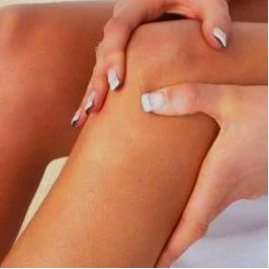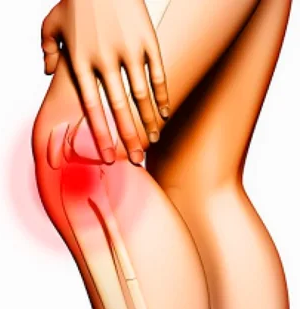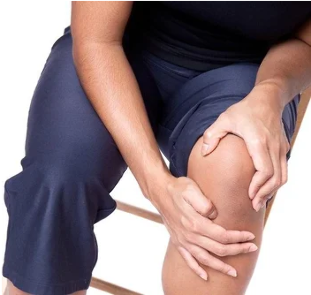
Knee pain is a widespread symptom that signals trouble in the body – the appearance of the disease of the joints or simple increased load on the legs.
It is difficult to find a person who never experiencing pain in the knees in a certain period of life. Discomfort, clicking or pain of varying intensity in the knee joints occur in both adults and children because of many reasons. The older the person becomes, the higher the likelihood of various diseases, the first symptom of which phenomenon is the pain in my knees. This is due to the age peculiarities of the body: slowing down of metabolic processes, wear of cartilage, accession of other problems with the musculoskeletal system, vessels, nerves.
Because of the complex anatomy, many structures experience significant loads, and often overloads, the knee joints are very vulnerable. Any damage to any structure element, for example, synovial bags, leads and violation of motor function of the knee and, consequently, pain syndrome. Ligaments and menisci are considered the most vulnerable, they get injured in 80-85% of cases.
The anatomical structure of the knee

The knee comprises the knee joint, the distal end of the femur and two condyles podmienkami, tibial bones, muscles, nerves, blood vessels, ligaments, patella (kneecap), joint bags and menisci.
The knee joint is one of the major joints of the body. Yes, it fits on top of the thigh. The articular surface of the lateral (outer) and medial (internal) condyles articulate with the patella and tibia. The meniscus, which represent connective tissue cartilage that serve as shock absorbers of the joint. Thanks, is the rational distribution of body weight on the tibial plateau and increases the joint's stability. Thin, double-headed, paliperidonesee other muscles sinhroniziruete capsular-ligamentous structures providing motor activity of the knee joint.
The elements of the knee are connected by multiple ligaments. Inside the joint there are two cruciate ligaments – back and front. Podmyshalsky bedernau bones are connected to bones tibia and fibular collateral ligament. Oblique popliteal ligament is located in the rear of the Bursa of the knee joint. From a number of joint cavities secrete the main synovial capsule not communicating with the joint. The blood supply of the elements of the knee is due to the network of blood vessels, and innervation – nerve fibers.
Causes of knee pain
There are many causes of soreness of the knee joints, which can be divided into several groups.
Traumatic lesions of the knee elements:
- Kick the knee. As a result of rupture of blood vessels occurs local bleeding in the soft tissue of the joint. Redness, swelling, nerve damage and causes pain, difficulty of motion.
- Full or partial rupture of ligaments. Often diagnosed partial violation of the integrity of the internal lateral ligament, which arises hell excessive eversion of the tibia outwards.
Outer ligament is torn less than that of the internal. This is due to the strong deviation of the tibia inwards with the exposed legs for example. Cruciate ligament inevitably accompanied by hemarthrosis.
Complete rupture of both ligaments is often associated with damage to the joint capsule, tearing of the internal meniscus. This injury results in excessive mobility of the knee joint, accompanied by severe pain, the intensity of which depends on the degree of hell gap.
- Hemarthrosis of the knee joint – the outpouring of blood into the joint cavity. Google + traumatic and non-traumatic nature. Traumatic hemarthrosis occurs when the meniscus ruptures, complete or incomplete rupture of ligaments, intra-articular fractures, contusions the knee region. Non-traumatic version of the phenomenon is one of the symptoms of diseases characterized by increased fragility of vascular walls or violation of the blood coagulation system. Yes, these include hemophilia, scurvy, severe forms of hemorrhagic diathesis. Accumulated in the joint cavity compresses the blood tissue, disrupting the blood circulation in them. A special pigment – hemosiderin – negative impact on the ligaments, hyaline cartilage, synovial bag, leading and losing their elasticity. The result of the defeat of the synovial Bursa of the phenomenon is swelling of the villi and increased production of joint fluid. The result of recurrent hemorrhage becomes degeneration and joint destruction.
- Knee miniscope – violation of the integrity of the menisci of the knee joint. In the lateral form is damaged outer meniscus, when the medial internal. This is one of the most frequent but difficult to diagnose injuries of the knee joint. At risk of the disease are not only athletes who are doing intense workouts, but also ordinary people. A meniscus tear can happen a hell of a sharp unusual movement when turning the body, the exposed legs, a strong blow to the knee.
- Patellar luxation – an abnormal displacement of the patella. The injury is not diagnosed in more than 0.7% of cases from total number of dislocations. Often occurs dislocation of the external, rarely internal, very rarely vertical or torsional. In case of incomplete dislocation of the patella is determined on the lateral (outer) condyles, with full call – in the hell of the lateral condyle.
- Closed or open fractures of the knee joint, upper part of leg bones or the lower division bedernau bones. Such injuries are often combined with lesions of the soft tissues of the knee, causing massive hemorrhage, excessive movement in the knee region, its deformation.

Inflammatory and degenerative-dystrophic diseases of the articular elements of the knee:
- Arthritis – inflammation of the knee joint. A similar mechanism of development of pathology observed in the osteoarthritis, ankylosing spondylitis, rheumatoid arthritis, gout (the deposition of urate in joints).
- Osteoarthritis (gonarthrosis) with damage to the knee joint of non-inflammatory nature, affecting all of its structure and resulting in seriously esneh degenerative changes.
- Bursitis inflammation of the synovial Bursa and causes pain when flexion-extension movements in the knee.
- Periarthritis of the tendons of the knee – inflammation of the capsule of the goose foot, knee tendons, and muscles and ligaments surrounding the joint. The pain occurs mostly while descending the stairs, especially with heavy cargo, and focuses on the inner surface of the knee.
- The chondropathy patella , degenerative-necrotic changes of the articular cartilage (rear) surface of the patella. The degree of destruction may be different hell areas of the lung soften and cracks and complete isolation.
- Chondromatous – Esna serious chronic disease caused by the developmental process of islet degeneration of the articular areas of the membrane shell in the cartilage of gondrom. It is not excluded the separate ossification of cartilaginous bodies.
- A Baker's cyst – the formation of a tight elastic, rounded tumor masses in the popliteal fossa, located on the opposite side the hell of the patella. The cyst is clearly visible in the unbent condition of the knee. Causes discomfort, pain in the popliteal region. When landmark size, constrict the blood vessels and nerves, leading to disorders of innervation and blood circulation.
- Goff's illness is a disease that is accompanied by damage and further degeneration of adipose tissue, which is located around the knee joint. The pinching, swelling, and other injuries of fat cells – adipocytes – end substitution of dense fibrous tissue. The result of the buffer function of "fat pillow" is broken, the very fatty tissue become not able to perform the role of shock absorber.
- Disease Osgood–Schlatter – disease, which is characterized by necrosis lumpy part of the tibia. Diagnosed in adolescents ad 10 and 18 years who are involved in sports. Below the patella of the phenomenon is a painful lump, if untreated, leads to restricted movement of legs or complete immobilization, and malnutrition of the muscles.

Diseases in which the possible irradiation of pain in the knee region:
- Coxarthrosis of the hip – chronic lesion of the hip joint, which is accompanied by progressive degeneration and degenerative changes in it. Often the pain extends down along the outer surface of the thigh and the knee or below.
- Neuropathy of the sciatic nerve is a non – inflammatory lesions of the nerve as a result of compression of the compression or spazmirovannah blood vessels. This nerve reaches the feet, beginning in the lumbar region and passing through the tailbone and pelvis. The blockade at any one point on it and results in impaired sensation or pulsating pain.
- Fibromyalgia – extra-articular lesion of soft tissues non-inflammatory nature with totality of symptoms such as arthralgia, muscle weakness, depression, etc.
Some systemic diseases that lead to pain in the knees:
- Osteoporosis is a disease of the skeletal system, chronically progressive course, which changes the mineral composition and bone density. "Washout" of calcium from bones leads to their fragility. The process is accompanied by aching or aching in the limbs.
- Tuberculosis of the bones. Tuberculous lesions of the area of bone leads to constant severe pain.
- Osteomyelitis is a disease of infectious-inflammatory nature, which affects all the structural elements of the bones. The result of both specific, such as, tuberculosis, and nonspecific, often coccal, osteomyelitis becomes flushing of the skin, swelling, local pain in bones and muscles, febrile temperature.
- Some infectious diseases. When Reiter syndrome, except for the inclusion of the urogenital tract and eyes, affects the joints. One of the manifestations of Lyme disease phenomenon is arthralgia.
The types of pain in the knees
Depending on etiology, the nature and intensity of the pain can be different.
- Aching. Arthritis, osteoarthritis.
- Pungent, strong. Fractures of elements of the knee, the ligament rupture, acute bursitis, knee slaps, aggravation of miniscope, deforming osteoarthritis.
- Throbbing. When running deforming arthrosis, injuries of the meniscus.
- Drill. When osteomyelitis.
- Stupid. With bursitis, chronic Legg.
- Burning. Upon compression of the sciatic nerve, tuberculous process in the bone.
- Shooting. With the pinching of the nerve trunk.
- Pain when walking. When the Baker's cyst, bursitis, arthritis, gonarthrosis, periarthritis.
- The pain alone. Gout, arthritis.

Diagnosis of pathologies causing pain in the knees
Fizikalna examination:
- collection of anamnesis and complaints;
- a visual examination with palpation of the knee.
Laboratory tests:
- biochemical and clinical blood tests;
- serological examination of blood;
- immunological analysis of blood;
- rheumatologic samples;
- bacteriological analysis of synovial fluid.
Invasive instrumental methods:
- arthroscopy;
- puncture of joint capsule;
- needle biopsy of bone.
Non-invasive diagnostics:
- radiography of the knee joint;
- individual stars;
- ultrasound examination of the joint;
- An MRI or CT scan.
Treatment knee pain
If the pain in one or both knees of the non-traumatic nature of occurrence, should be treated first so the therapist based on patient's complaints and results of objective examination, but will send a specialist – orthopedist, a rheumatologist, neurologist or phlebologist. With any knee injury and need to contact the surgeon or the traumatologist-orthopedist.

Treatment at the skin case is different, depends on the cause of the pain of hell, that is hell kind of injury or disease. For each disease there is a pile treatment. But first the patient must observe a few General rules:
- significantly reduce the duration of walking and being on your feet throughout the day;
- athletes temporarily (until the healing) is to abandon the hell of training, but ordinary people hell running or jumping;
- when the increased pain to completely abandon Ada movements, to impose on the knee locking elastic bandages;
- wear a brace or bandage to immobilize the knee joint;
- if you blow the cold to the place of trauma exposure.
Rheumatoid, psoriatic arthritis, systemic autoimmune diseases need to be seriously significant treatment, which is carried out for many months. Basic therapy consists of three immunosuppressants, nonsteroidal anti-inflammatory and hormonal drugs, gold preparations, etc.
In the treatment of bursitis used painkillers and anti-inflammatory medication. If there is an infection, a course of antibiotics. Therapeutic puncture of the bags is performed to remove excess fluid from the synovial cavity and/or the introduction of one of the corticosteroids. Hell chronic inflammation of the Bursa helps to get rid of surgery – surgical bunion surgery.
When deforming osteoarthritis effective intra-articular injections of corticosteroids, prolonged use of NSAIDs, and chondroprotectors. For pain locally appointed compresses with Dimexidum, or bischofite, creams and gels with anti-inflammatory action. Helps massage, physiotherapy, therapeutic exercises. Severe lesions of the knee require surgery – arthroplasty of the hip.
Treatment of osteoporosis is you take bisphosphonates calcitonin, calcium, vitamin D, etc.
Treatment of meniscus tear can be conservative or surgical. Conservative therapy consists century e the use of analgesics, NSAIDs, hyaluronic acid, chondroprotectors. But first produce reposition the joint.
Types of surgical intervention:
- meniscectomy;
- partial (partial) meniscectomy;
- transplantation of the meniscus;
- arthroscopy;
- arthroscopic stitching of the torn meniscus.
With any knee injury after treatment a very important period of rehabilitation, which should take place under the supervision of a physiotherapist or a podiatrist. The doctor will make an optimal recovery of joint function. The main methods of postoperative rehabilitation are considered massage and medical gymnastics. Also effective lessons on special simulators, gradually developed a knee joint.












































